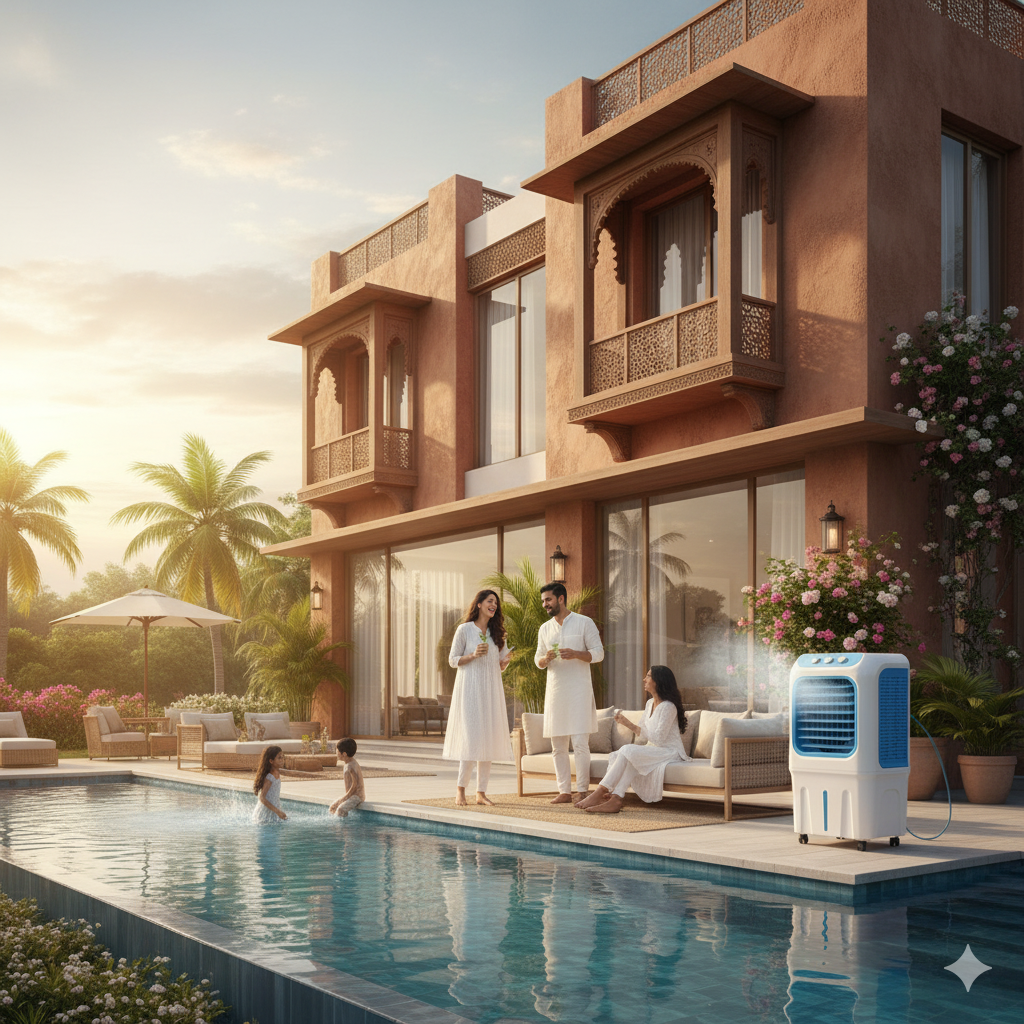When the Indian summer sun scorches the streets and the air seems to shimmer with heat, there’s one timeless companion that has stood by millions of households — the Indian air cooler. Long before air conditioners became a symbol of luxury, air coolers defined comfort, sustainability, and simplicity in Indian homes. Even today, they remain the most practical, eco-friendly, and affordable way to stay cool.
The Legacy of Cooling, the Indian Way
The concept of air cooling isn’t new to India. From the Mughal era’s architectural “jalis” and water fountains to the handwoven “khas” mats soaked in water and placed by windows, Indians have always embraced natural cooling methods. The modern Indian cooler is an evolution of that same wisdom — combining the principles of evaporative cooling with modern engineering.
As hot air passes through water-moistened pads inside the cooler, it loses heat through evaporation. The fan then circulates the cool, moist air throughout the room. The result is a refreshing, natural breeze that’s both gentle and effective, unlike the dry chill of an air conditioner.
Affordable Comfort for Every Home
What makes Indian coolers truly remarkable is their accessibility. From small personal coolers for bedrooms to large desert coolers built for open spaces, there’s a model for every household. Their low power consumption makes them a cost-effective alternative to air conditioners — perfect for areas with frequent power cuts or high electricity rates.
In many small towns and villages, the hum of a cooler marks the arrival of summer. It’s the sound of comfort, of families gathering in living rooms, of children sleeping soundly through the night while the cooler hums softly in the background.
Eco-Friendly Cooling for a Sustainable Future
In an age where energy conservation and environmental awareness are more important than ever, Indian coolers stand out as green champions. They use no harmful refrigerants, rely only on air and water, and consume nearly 80% less electricity compared to air conditioners.
Moreover, the air they produce is fresh, not recycled. It circulates clean outdoor air into your home, maintaining better ventilation and reducing the stuffiness that closed AC rooms often create. It’s a perfect blend of comfort and sustainability — a win-win for you and the planet.
Crafted for Indian Conditions
Indian summers are diverse — dry in Rajasthan, humid in Kolkata, hot and windy in Delhi. Coolers are designed with this versatility in mind. Desert coolers, equipped with large tanks and powerful fans, are ideal for dry regions, while tower and personal coolers suit urban apartments and humid climates.
Many modern Indian brands, like Zuhaan, Symphony, and Bajaj, are now integrating smart features such as remote control operation, auto-fill water systems, and inverter compatibility — bringing tradition and technology together.
The Emotional Connection
For many Indians, coolers are more than just machines — they’re a symbol of nostalgia. They remind us of summer evenings spent on terraces, the smell of wet grass mats, and the rhythmic hum that lulled generations to sleep. Before ACs became common, coolers defined summer comfort. Even today, in countless homes, that bond remains unbroken.
The Modern Reinvention
As the market evolves, Indian coolers are being reinvented to meet modern lifestyles. Contemporary designs now feature sleek bodies, energy-efficient motors, and durable honeycomb pads that enhance performance and longevity. Some even come with air purification filters and low water indicators for convenience.
This evolution ensures that the humble air cooler continues to stay relevant — not as a relic of the past, but as a sustainable solution for the future.
Conclusion
In the battle against the Indian summer, Indian air coolers have stood the test of time. They represent a perfect fusion of tradition, practicality, and innovation. While technology keeps evolving, the essence of natural, water-based cooling remains unbeatable.
So, as the sun blazes this summer, skip the artificial chill and embrace the refreshing, earthy comfort of an Indian cooler — where every breeze carries a touch of nostalgia, sustainability, and homegrown ingenuity.

